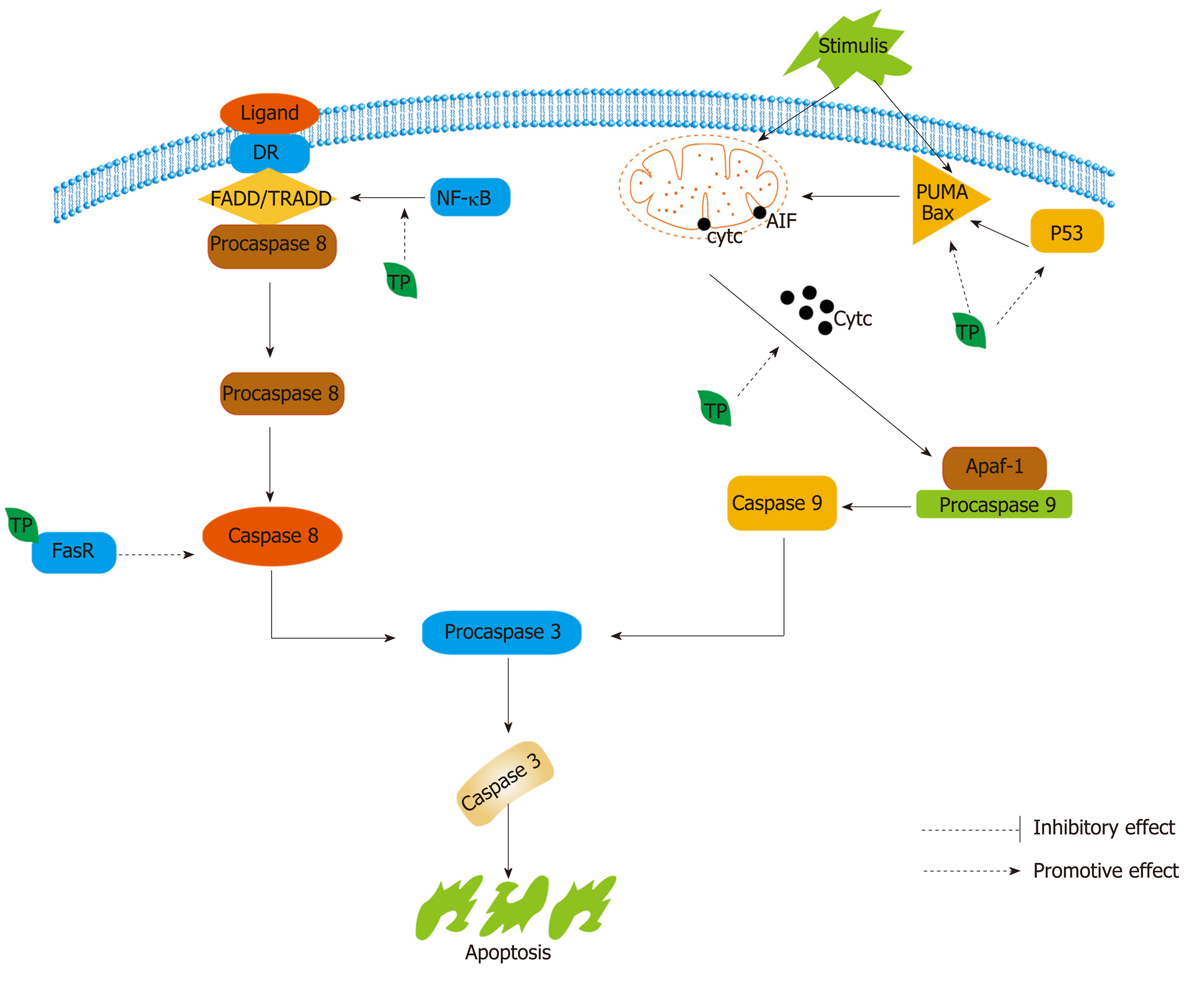Copyright
©The Author(s) 2020.
World J Gastroenterol. Feb 14, 2020; 26(6): 562-597
Published online Feb 14, 2020. doi: 10.3748/wjg.v26.i6.562
Published online Feb 14, 2020. doi: 10.3748/wjg.v26.i6.562
Figure 8 Both extrinsic and intrinsic pathways converge in the same terminal execution pathway, which is initiated by the cleavage of caspase-3.
In the extrinsic pathway, FasL/FasR and tumor necrosis factor-alpha (TNF-α)/ tumor necrosis factor receptor (TNFR)1 associate with the adapter protein called Fas-associated death domain (FADD), and procaspase-8 and TNF-α/TNFR1 also need to bind to TNFR-associated death domain to initiate the execution pathway[253]. In the intrinsic pathway, all stimuli can change the inner mitochondrial membrane to initiate the mitochondrial permeability transition and release two main groups of normally sequestered pro-apoptotic proteins, such as cytochrome c, from the mitochondria into the cytosol[255]. These proteins activate procaspase-9 and caspase-9 to activate the caspase-dependent mitochondrial pathway[253]. Tea polyphenols (TPs) can promote apoptosis of tumor cells. In the intrinsic pathway, TPs can up-regulate p53, Bax, and PUMA, which are proteins that promote cell death. In addition, TPs can also induce the release of cytochrome c from the mitochondria into the cytosol. In the extrinsic pathway, TPs induce apoptosis, mediated by caspase-8, through a FADD-dependent pathway. FADD: Fas-associated death domain; TRADD: TNFR-associated death domain; TP: Tea polyphenol.
- Citation: Wang ST, Cui WQ, Pan D, Jiang M, Chang B, Sang LX. Tea polyphenols and their chemopreventive and therapeutic effects on colorectal cancer. World J Gastroenterol 2020; 26(6): 562-597
- URL: https://www.wjgnet.com/1007-9327/full/v26/i6/562.htm
- DOI: https://dx.doi.org/10.3748/wjg.v26.i6.562









